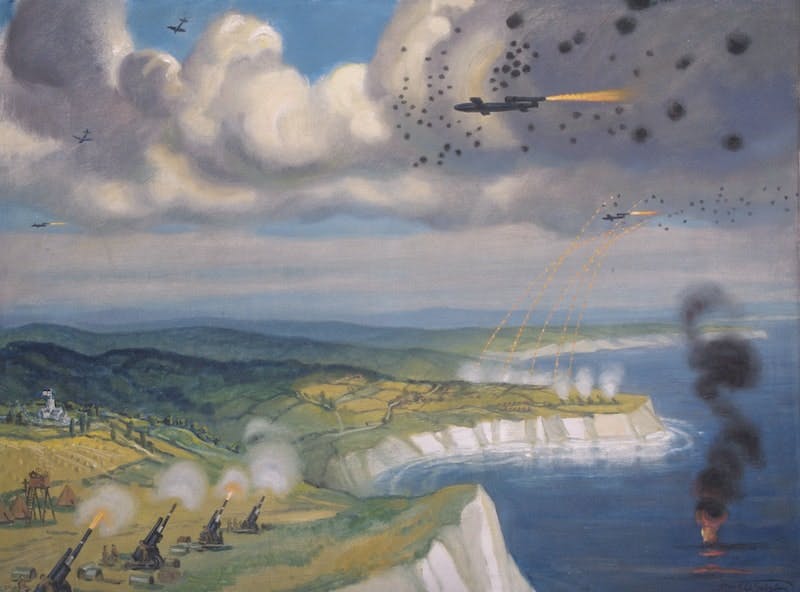
May
9
5:00pm
The decision to redeploy Britain’s V-1 defences
By RAF Museum
At 6.00pm on Thursday 28 September 2023, John Alexander will discuss the decision to redeploy Britain's V-1 defences. This lecture will be live-streamed via Crowdcast.
This free lecture is part of the RAF Museum's Research Lecture Programme. If you'd like to support the RAF Museum, you can make a donation at: https://support.rafmuseum.org/Donate-Now.
Talk Outline
The reinforced British air defence scheme for the anticipated German V-1 ‘flying bomb’ offensive, like all since 1917, prioritised fighters over anti-aircraft (AA) guns. When the offensive started overnight 15 June 1944, the combined defences brought down only thirty-three of the 244 V-1s launched, and seventy landed on London, including eleven hit by AA guns. Only the fastest British fighters could engage the V-1s and the 1,000 AA guns deployed destroyed less than ten per cent they engaged. On 13 July Air Marshal Roderick Hill, the unassuming commander of Air Defence Great Britain, ordered, seemingly without reference to his superiors, the complete reorientation of the scheme, redeploying 1,000 guns and 23,000 men and women of the British Army’s AA Command from the Kent Downs to the coast, and separating fighter and gun engagement zones. The redeployment allowed the guns to exploit new US built gun-laying radars and proximity fuzes, increasing the guns’ lethality fourfold.
Hill’s decision warrants re-examination. By prioritising AA guns over fighters, the Air Ministry, the official histories note, suspected Duncan Sandys, the minister responsible for countering the V-1s, and prime minister Winston Churchill’s son-in-law and a former controversial AA officer, had pressured Hill into the decision. Moreover, both AA Command and Sandys claimed responsibility for the decision after the war, differing from the official history. This paper, using previously uncited archival sources, finds the decision was Hill’s, based on an appreciation by his senior reservist air staff officer. Moreover, Hill's decision is relevant today, countering enemy deep attack by uncrewed aerial systems requiring the integration of strategic home defence and expeditionary operations in the same time and space, across multiple domains and service boundaries. It enabled the rapid adaptation of new technology into an established integrated air defence system. The paper concludes political imperative compressed the strategic and operational levels of command.
About John Alexander
John Alexander is researching for a PhD by publication on the beginnings of British air/land operational art between 1918 and 1942. His research starts with joint air/land integration as an afterthought at the Battle of Amiens in August 1918 and ends with General Bernard Law Montgomery by 1943 regarding all land operations as joint air/land operations. He has published award winning research in Air and Space Power Review, the RUSI Journal, and Asian Affairs, is the editor of the Journal of the T E Lawrence Society and has given numerous conference papers. As a regular RAF officer, he specialised in air/land integration, from the Falklands in 1982, through various campaigns in the Middle East, to Chief Air at Headquarters Allied Rapid Reaction Corps. He has conceptualised warfare for the UK MOD, RAF and NATO and spent much of 2011 to 2020 in Afghanistan and Pakistan. He is now the UK MOD’s Joint Warfare Directorate’s lead observer/trainer and post exercise report writer for UK joint operational headquarters’ exercises as a Royal Auxiliary Air Force group captain. He was twice selected as a Chief of the Air Staff Fellow, at the Universities of Cambridge and Oxford, and has four postgraduate degrees including one from the Pakistan National Defence University.
0
days
0
hrs
0
min
10
sec
hosted by
RAF Museum
share